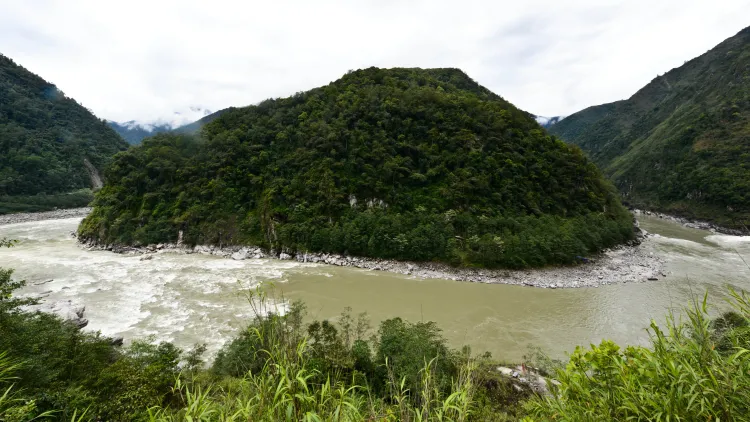Is China's Medog Hydropower Station Endangering Tibetan Identity?

Synopsis
Key Takeaways
- Medog Hydropower Station threatens Tibetan identity.
- Potential for cultural and spiritual dislocation.
- Lessons from the Three Gorges Dam highlight risks.
- The Yarlung Tsangpo holds sacred significance for Tibetans.
- China must consider alternatives that respect Tibetan heritage.
Beijing, Aug 6 (NationPress) – The ambitious Medog Hydropower Station on the Yarlung Tsangpo River in Tibet threatens to severely undermine the cultural, spiritual, and geographical foundations that have sustained Tibetan identity for thousands of years, a report revealed on Wednesday.
This colossal dam, branded as the 'Project of the Century', promises clean energy, economic growth, and strategic benefits. However, beneath this triumphant narrative lurks a troubling absence: the Tibetan people, their ancestral lands, and their traditions, as highlighted by Jianli Yang, a research fellow at Harvard's Kennedy School of Government, in The Diplomat.
Reflecting on the experiences from the Three Gorges Dam, once considered China's most ambitious infrastructure endeavor, the report notes that over 1.3 million individuals were displaced, significant historical and cultural sites submerged, and entire ecosystems altered.
Numerous communities faced uprooting without sufficient support, receiving only minimal compensation and resettlement initiatives. This has left a legacy of social trauma, fractured families, lost livelihoods, and a disconnection from their history, as emphasized in the report.
'Currently, Tibet is on the verge of a similar disruption, but the implications may be even more profound. For Tibetans, land holds sacred significance. The Yarlung Tsangpo is not merely a river; it is a maternal figure, a spiritual lifeline flowing from the glaciers of Mount Kailash through a revered landscape. The Great Bend of the Yarlung Tsangpo, where the dam is being built, is honored as the heart of Pemako, a mythical sanctuary foretold to protect humanity during apocalyptic times. To reroute or submerge this land is not just to drown villages – it is to desecrate a living spiritual geography steeped in myth and pilgrimage,' the report stated.
The report further emphasizes that, in contrast to the heavily industrialized Three Gorges region, Medog remains one of the final bastions of Tibetan cultural and ecological integrity. Any forced migration would amount to both a physical dislocation and a cultural amputation.
Yang argues that the temples, pilgrimage routes, meditation caves, and sacred mountains form a living chain of Tibetan belief and identity that cannot be replicated in relocated areas or rebuilt through compensation.
'Unlike the Three Gorges Dam, which featured relatively public – albeit contentious – displacement statistics and resettlement strategies, the Yarlung Tsangpo project is progressing under a calculated silence,' he noted.
'This quietude also reflects a more profound logic in China's Tibet policy. For decades, the state has advanced a vision of 'development' in Tibet that often equates progress with assimilation, emphasizing urbanization, tourism, resource extraction, and now, mega-dams,' the report concluded.
The report suggests that China stands at a critical junction regarding the Yarlung Tsangpo project: it can follow the model of the Three Gorges, displacing communities with 'promises of power and prosperity', or it can adopt a different approach – one that sees Tibet not as a blank canvas for engineering aspirations, but as a living civilization worthy of respect, protection, and a voice.









